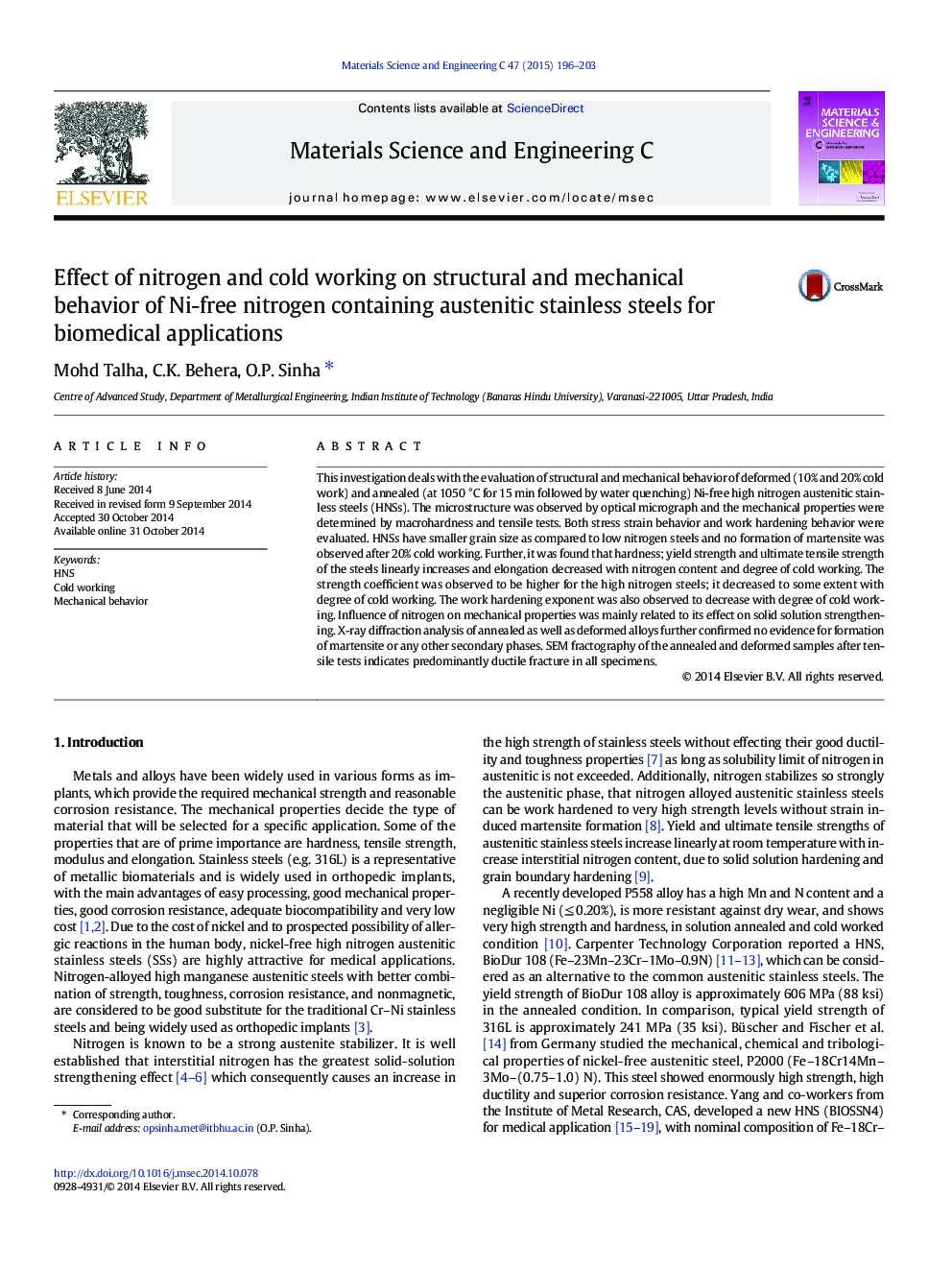| Article ID | Journal | Published Year | Pages | File Type |
|---|---|---|---|---|
| 1428393 | Materials Science and Engineering: C | 2015 | 8 Pages |
•Effect of cold working on mechanical behavior of Ni-free austenitic stainless steels•Prior cold work had significant influence on the mechanical behavior.•Yield strength and tensile strength increased with cold working and nitrogen content.•No formation of martensite or any other secondary phases with cold working•Ductility decreased with increasing nitrogen content and degree of cold working.
This investigation deals with the evaluation of structural and mechanical behavior of deformed (10% and 20% cold work) and annealed (at 1050 °C for 15 min followed by water quenching) Ni-free high nitrogen austenitic stainless steels (HNSs). The microstructure was observed by optical micrograph and the mechanical properties were determined by macrohardness and tensile tests. Both stress strain behavior and work hardening behavior were evaluated. HNSs have smaller grain size as compared to low nitrogen steels and no formation of martensite was observed after 20% cold working. Further, it was found that hardness; yield strength and ultimate tensile strength of the steels linearly increases and elongation decreased with nitrogen content and degree of cold working. The strength coefficient was observed to be higher for the high nitrogen steels; it decreased to some extent with degree of cold working. The work hardening exponent was also observed to decrease with degree of cold working. Influence of nitrogen on mechanical properties was mainly related to its effect on solid solution strengthening. X-ray diffraction analysis of annealed as well as deformed alloys further confirmed no evidence for formation of martensite or any other secondary phases. SEM fractography of the annealed and deformed samples after tensile tests indicates predominantly ductile fracture in all specimens.
Graphical abstractEffect of cold working on mechanical properties of indigenized Ni-free nitrogen containing austenitic stainless steels was explored. Hardness, yield strength and ultimate tensile strength of the steels increased and elongation decreased with nitrogen content and degree of cold working. X-ray diffraction analysis of annealed as well as deformed alloys confirmed no evidence for formation of martensite or any other secondary phases. SEM fractography of the annealed and deformed samples indicates predominantly ductile fracture.Figure optionsDownload full-size imageDownload as PowerPoint slide
